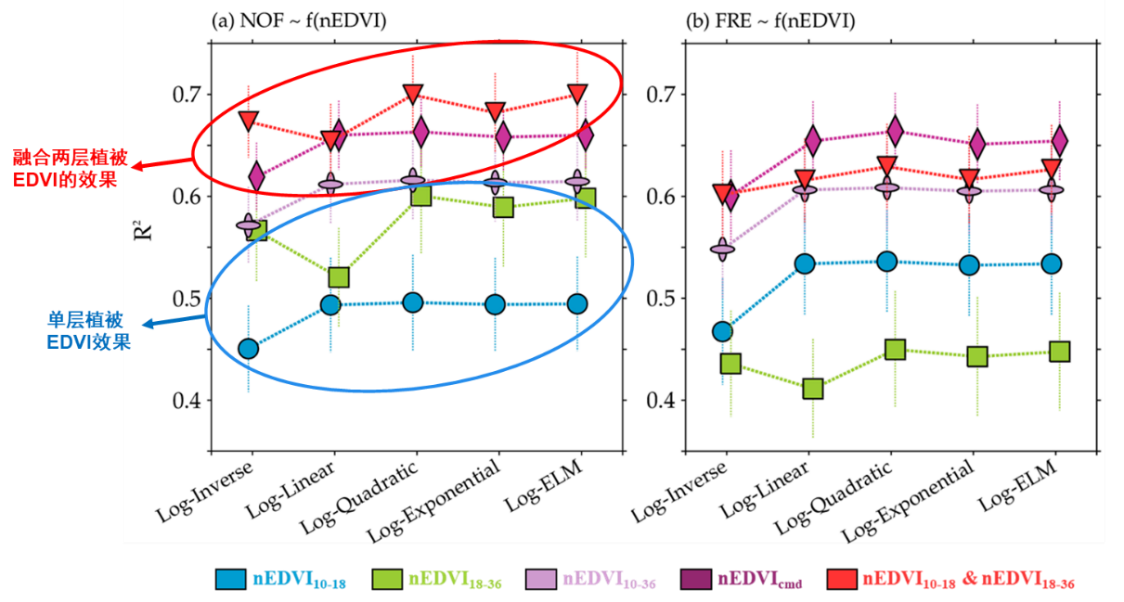Vegetation fires are common phenomena across the world. Globally, fires burn a total of ~350 million hectares/year of vegetated areas, approximately the size of India, and release tremendous emissions into atmosphere, which greatly affect terrestrial ecosystems, climate, human health, and the economy. Effectively assessing fire danger is critical to mitigate the associated negative effects of fires, which is especially important under global warming with impressive extreme fire events in recent years such as the 2019 Amazon rainforest wildfires, Australian 2019/2020 Black Summer bushfires, and the Hawaii Firestorm in early August in 2023. The state-of-the-art satellite microwave technology provides the unique opportunity to monitor vegetation vertical structure and vegetation water content (VWC) status of different vegetation strata, which is a critical information for fire risk. However, associated investigation in fire domain is rare.

Figure 1. Schematic diagram of the multiple-channel EDVIs in monitoring VWC of different vegetation layers, and potential effect on fires.
Recently, Professor Li Rui and Dr. Yuyun Fu from the State Key Laboratory of Fire Science in the University of Science and Technology of China (USTC) combined fire observations from geostationary and the satellite-derived multiple-channel microwave VWC indices—EDVIs in mainland Southeast Asia during 2015–2019 to investigate the response of the number of fires (NOF) and fire radiant energy (FRE) to VWC status of different vegetation strata, and compared to the influence of weather conditions (represented by fire weather indices). The associated work is titled Satellite observed response of fire dynamics to vegetation water content and weather conditions in Southeast Asia and is published at the top Earth-science journal of ISPRS Journal of Photogrammetry and Remote Sensing (Impact factor=12.7, CiteScore=19.2).

Figure 2. Mean R2 for the different models examined between the monthly mean NOF (and FRE) and EDVI, with vertical bars indicating the standard deviations.
Results show that the monthly variations of NOF and FRE in mainland Southeast Asia non-linearly decrease with the EDVI of single vegetation layer, and associated explained variances (indicated by R2) vary between 40–60%, which further improve to 60–70% by incorporating EDVIs of two different vegetation layers. Compared to the wildly-used fire weather indies (FFMC, DMC, DC, BUI, ISI, FWI, and DSR), EDVI provides generally lower but more or less new explanation for NOF and FRE, and the explained variances was found to improve from 45–85% using fire weather indies alone to 72–90% by their combination with EDVI. Especially, the combinations of fire weather indices with EDVIs of two vegetation layers provides almost the highest explanation for fires. In addition, the log-linear and/or log-quadratic models are identified to outperform other models examined in depicting the fire-EDVI and fire-fire weather indices relationships; and models that have incorporated both kinds of indices generally perform best in explaining and modelling the temporal variations of NOF and FRE.
These findings reveal the differentiated VWC effects on NOF and FRE among vegetation strata and quantify the strong nonlinear response of fires to VWC and weather conditions in mainland Southeast Asia, which could provide new insight for fire danger assessments with the utility of microwave observations.

Figure 3. Mean R2 for the examined regression models of monthly mean NOF and FRE by using fire weather indices (FFMC, DC, ISI) and EDVI as explanatory variables. The vertical bars indicate standard deviations. Results for the combinations of other four fire weather indices DMC, BUI, FWI, DSR with EDVI can be found in the supplementary material in the research article.
The work was supported by National Key Research and Development Program of China, the National Natural Science Foundation of China (NSFC), the Fundamental Research Funds for the Central Universities, and the support from the Jiangsu Provincial 2011 Program (Collaborative Innovation Center of Climate Change).